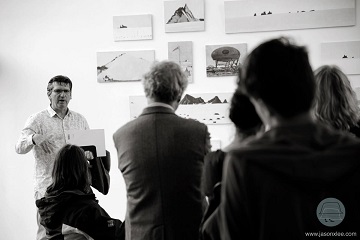 |
| Deirdre Leddin, Rising Tide, 2016, photowork |
Uncover: an exhibition by graduates of the BA Visual Art
Degree Programme Sherkin Island 2016 at Uillinn: West Cork Arts Centre
Following a hugely successful art-trail on Sherkin
Island, the graduates of the Sherkin Island BA Visual Art Degree Programme are
bringing their work to the mainland. Uncover
will launched at Uillinn: West Cork Arts Centre on Friday 9 September at 7.00pm.
 |
| Map of Sherkin Island Art Trail 2016 |
Over 1000 visitors flocked to the island to
see the graduates’ exhibition. Uncover
at Uillinn is another opportunity to enjoy the work of these new emerging
talents and preview some potentially future greats.
A selection of the artwork displayed on the
island has been chosen to be included in Uncover. Curated by Ann Davoren, Director of WCAC,
the graduates’ work is spread across both galleries and includes a
diverse range of media encompassing painting, drawing, multimedia work, film,
photography, sound and installation.
This year’s ones to watch are Deirdre Buckley Cairns, Lesley Cox, Lucy
Cox, Joe Davis, Jean Dunne, Monica
Dunne, Ellès Innemee, Deirdre Leddin, Brigid O'Connell Madden, Clare McLaughlin,
Daireen McMullan, Donal O'Connor, Marika O’Sullivan, Detlef Schlich, Philomena
Smith, Ben Townsend and Ciara Ward.
 |
| Ben Townsend, still from Embody, film |
The BA Visual Art is an innovative honours
degree programme delivered on Sherkin Island by Dublin Institute of Technology
in partnership with Sherkin Island Development Society and West Cork Arts
Centre.
 |
| Detlef Schlich, Transodin's Tragedy, still from video |
The exhibition was opened by Dr Tina
Kinsella, Lecturer in Critical Theory, School of Creative Arts, Dublin Institute
of Technology on Friday 9 September at 7.00pm.
Uncover continues until Saturday 15
October. Admission is free and all are welcome.
BA (hons) Visual Art Programmme based on Sherkin Island
is fully accredited, managed and delivered by the Dublin School of Creative
Arts, Dublin Institute of Technology (DIT) in partnership with Sherkin Island
Development Society (SIDS) and Uillinn: West Cork Arts Centre and is
part-funded by Cork County Council and the Department of Arts, Heritage and the
Gaeltacht.








